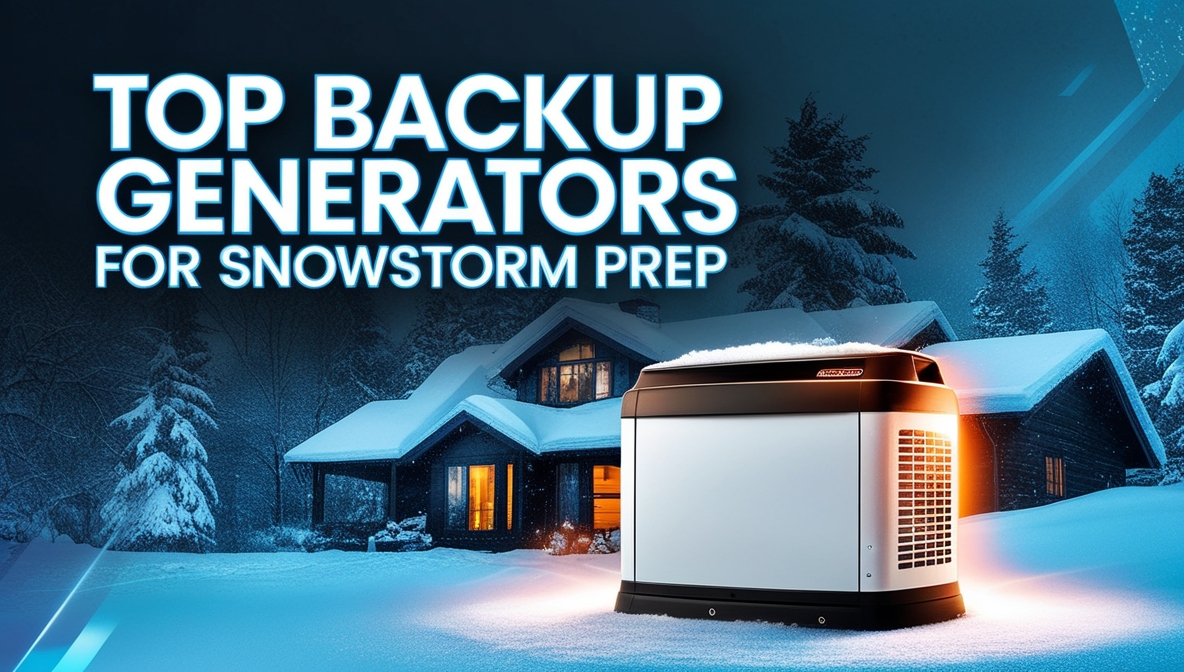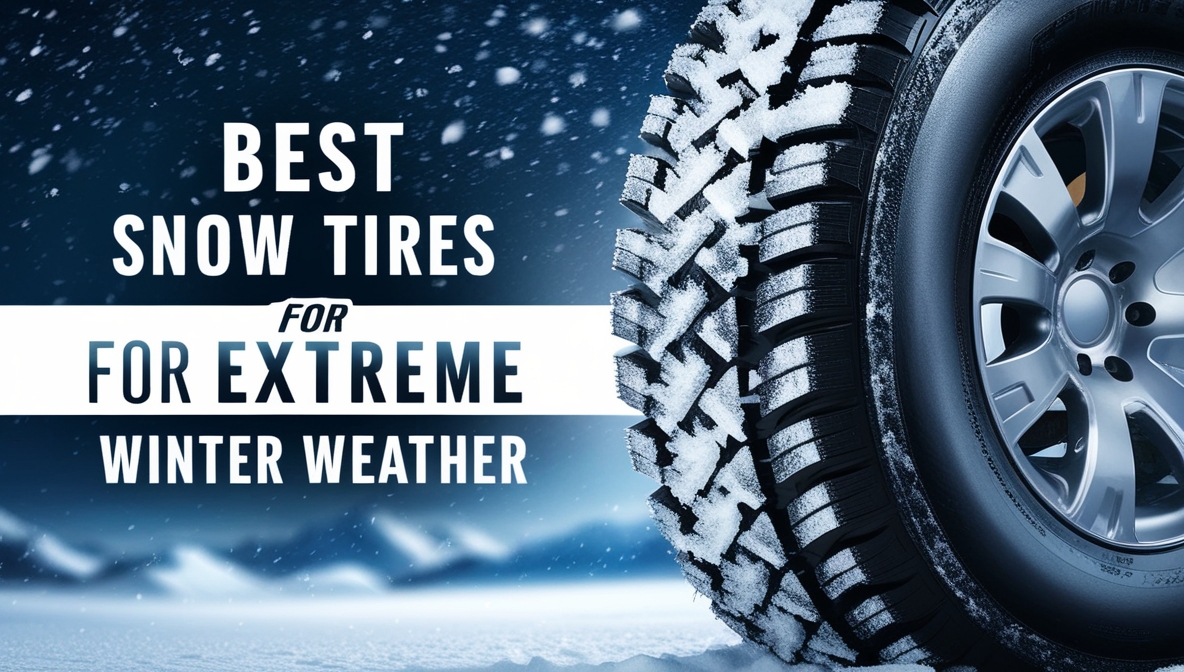When winter storms threaten to leave you powerless, having a reliable backup generator can make all the difference. Being without heat, lighting, or the ability to charge your devices in subzero temperatures is not just uncomfortable but can be dangerous. Finding the best backup generators for snowstorms can be a game-changer, ensuring your household stays warm and secure during an outage. In this guide, we’ll explore various options and what to look for when choosing the right generator for your needs.
Why You Need a Backup Generator for Snowstorm Season
Snowstorms can cause severe disruptions, from heavy snow and ice damaging power lines to freezing winds cutting off heat. During these emergencies, a backup generator becomes more than a convenience; it’s a crucial part of your home safety plan. Generators can power essential home appliances, keep heating systems running, and ensure communication devices remain functional. Investing in one of the best backup generators for snowstorms is an investment in peace of mind.
1. Types of Backup Generators
Before diving into specific models, it’s important to understand the two main types of generators suitable for snowstorm prep:
- Portable Generators: These generators are smaller, more affordable, and easier to store. They’re perfect for short-term outages and can power essential devices and appliances. However, they usually run on gasoline, which requires safe storage and can be challenging to refuel during harsh winter weather.
- Standby Generators: These are permanent installations connected to your home’s electrical system. They run on natural gas or propane and automatically activate when the power goes out. While more expensive, they are the most reliable option for long-term, whole-house power.
2. Key Features to Consider When Choosing a Generator
To ensure you’re selecting one of the best backup generators for snowstorms, keep an eye on these crucial features:
- Power Output: Generators are measured in watts. Calculate your household’s energy needs to find the right size. For example, a 5,000-watt generator can run essential appliances, while a 20,000-watt standby generator can power an entire house.
- Fuel Type and Efficiency: Generators can run on gasoline, propane, or natural gas. During snowstorms, propane and natural gas are generally more reliable since gasoline may be harder to store and access.
- Cold Weather Features: Look for models with cold-start technology, which ensures the generator can start even in freezing temperatures.
- Runtime: Consider how long the generator can run on a single tank of fuel. Longer runtimes mean less frequent refueling.
- Noise Level: Some generators are very loud, which may not be ideal if you live in a quiet neighborhood. Inverter generators are known for being quieter.
3. Best Backup Generators for Snowstorms
Let’s take a look at some of the top-performing generators that are perfect for snowstorm prep:
a. Generac Guardian 24kW Home Standby Generator
- Type: Standby Generator
- Fuel Source: Natural gas or liquid propane
- Power Output: 24,000 watts
- Why It’s Great: The Generac Guardian series is well-known for providing reliable, high-power backup during storms. This model offers Wi-Fi capabilities, so you can monitor your generator remotely, and its automatic operation ensures you won’t have to step out into the cold to get it running. It’s also equipped with a durable aluminum enclosure to withstand harsh winter conditions.
- Pros: Whole-house coverage, automatic start, weather-resistant
- Cons: Expensive, professional installation required
b. Champion 100813 9375/7500-Watt Portable Generator
- Type: Portable Generator
- Fuel Source: Gasoline
- Power Output: 7,500 running watts
- Why It’s Great: This model offers enough power to run a furnace, refrigerator, and a few smaller appliances, making it one of the best backup generators for snowstorms for those on a budget. It comes with a cold start feature, ensuring it starts even in freezing temperatures. The built-in Intelligauge allows you to monitor voltage, frequency, and runtime hours easily.
- Pros: Budget-friendly, easy to use, reliable in cold weather
- Cons: Manual start, limited power output
c. Westinghouse WGen7500DF Dual Fuel Portable Generator
- Type: Portable Generator
- Fuel Source: Dual (Gasoline or Propane)
- Power Output: 7,500 running watts
- Why It’s Great: The dual-fuel capability provides flexibility, especially during snowstorms when fuel availability might be limited. It features an electric start for easy operation and a built-in fuel gauge for monitoring fuel levels. It’s also RV-ready, making it versatile for other uses.
- Pros: Dual-fuel capability, electric start, durable
- Cons: Heavier and bulkier compared to some other portable models
d. Honda EU2200i Portable Inverter Generator
- Type: Inverter Generator
- Fuel Source: Gasoline
- Power Output: 2,200 running watts
- Why It’s Great: If you need a smaller generator for essential electronics or an emergency heating source, this compact yet efficient Honda model is ideal. It’s incredibly quiet, fuel-efficient, and reliable. The Eco-Throttle System allows for longer runtime and better fuel efficiency, making it a top pick for limited, critical use.
- Pros: Ultra-quiet, lightweight, fuel-efficient
- Cons: Limited power output, higher cost per watt
4. How to Maintain Your Generator for Winter
Even the best backup generators for snowstorms require maintenance to ensure they work when needed. Here are some tips:
- Regular Testing: Run your generator periodically, even when you don’t need it, to ensure it starts easily and runs smoothly.
- Fuel Management: For gasoline generators, add a fuel stabilizer to prevent the gasoline from breaking down over time. For standby generators, check fuel lines and tanks for leaks or damage.
- Oil and Filter Checks: Change the oil and filters as recommended by the manufacturer. Dirty oil can damage the engine and reduce the generator’s lifespan.
- Battery Check: Ensure the battery is fully charged, especially for generators with electric start features.
5. Safety Precautions to Keep in Mind
- Proper Ventilation: Never run a generator indoors or in an enclosed space like a garage. Always place it at least 20 feet away from windows and doors to prevent carbon monoxide poisoning.
- Fuel Storage: Store fuel in approved containers, away from living areas, and in a safe, dry place. Always refuel a generator after it has cooled down to avoid accidents.
- Power Management: Avoid overloading your generator. Only plug in essential appliances and consider using a transfer switch for standby generators.
6. Final Thoughts on Choosing the Best Generator
Selecting the best backup generators for snowstorms depends on your specific needs, budget, and how much power your home requires. While standby generators provide seamless, whole-house coverage, portable generators offer a more affordable yet effective solution for short-term power outages. No matter which you choose, being prepared can give you peace of mind and keep your household safe during even the harshest winter storms.
Don’t wait for the first snowflake to fall—plan ahead and invest in a reliable generator to protect your family and home. Stay warm, stay safe, and be ready for whatever winter throws your way.




